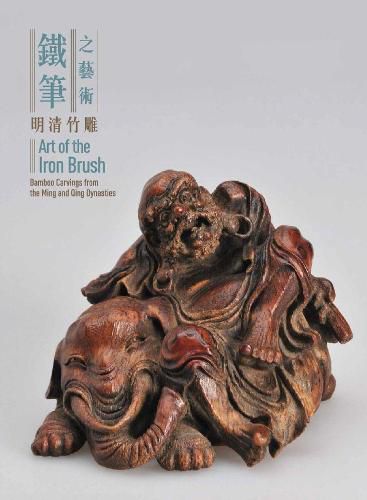Readings Newsletter
Become a Readings Member to make your shopping experience even easier.
Sign in or sign up for free!
You’re not far away from qualifying for FREE standard shipping within Australia
You’ve qualified for FREE standard shipping within Australia
The cart is loading…






Durable, flexible and abundant in nature, bamboo has been used as a material and a subject in Chinese art for millennia. Because it bends in a storm but does not break, it was particularly associated with the integrity and personal virtue of the scholarly elite, who embraced its symbolic value by planting bamboo in their courtyards, observing it in the wild, and by producing, acquiring and displaying delicate bamboo objects suitable for various scholarly pursuits, such as painting and calligraphy. During the Ming dynasty (1368-1644), scholarly and imperial patronage transformed bamboo carving into a major art form. Scholar-carvers and workshops centred around Jiading (in present-day Shanghai) and Jinling (now Nanjing) produced large numbers of brush pots, wrist rests, miniature landscapes, figurines and other objects. Many bamboo carvers also worked in other materials soft enough to be manipulated with the ‘iron brush’–a term for knives and other carving tools used by literati to transfer their brushwork aesthetic to other media–including boxwood, rhinoceros’ horns and ivory, which shared a kind of loose identity under the heading of diaoke (‘carving’ in modern Chinese). Small in scale yet teeming with life, these works reflect prodigious technical skill and great imaginary involvement because of the unique shapes and contortions of the materials involved.,,,,,, ( ) ( ) ( ) – –,
$9.00 standard shipping within Australia
FREE standard shipping within Australia for orders over $100.00
Express & International shipping calculated at checkout
Durable, flexible and abundant in nature, bamboo has been used as a material and a subject in Chinese art for millennia. Because it bends in a storm but does not break, it was particularly associated with the integrity and personal virtue of the scholarly elite, who embraced its symbolic value by planting bamboo in their courtyards, observing it in the wild, and by producing, acquiring and displaying delicate bamboo objects suitable for various scholarly pursuits, such as painting and calligraphy. During the Ming dynasty (1368-1644), scholarly and imperial patronage transformed bamboo carving into a major art form. Scholar-carvers and workshops centred around Jiading (in present-day Shanghai) and Jinling (now Nanjing) produced large numbers of brush pots, wrist rests, miniature landscapes, figurines and other objects. Many bamboo carvers also worked in other materials soft enough to be manipulated with the ‘iron brush’–a term for knives and other carving tools used by literati to transfer their brushwork aesthetic to other media–including boxwood, rhinoceros’ horns and ivory, which shared a kind of loose identity under the heading of diaoke (‘carving’ in modern Chinese). Small in scale yet teeming with life, these works reflect prodigious technical skill and great imaginary involvement because of the unique shapes and contortions of the materials involved.,,,,,, ( ) ( ) ( ) – –,